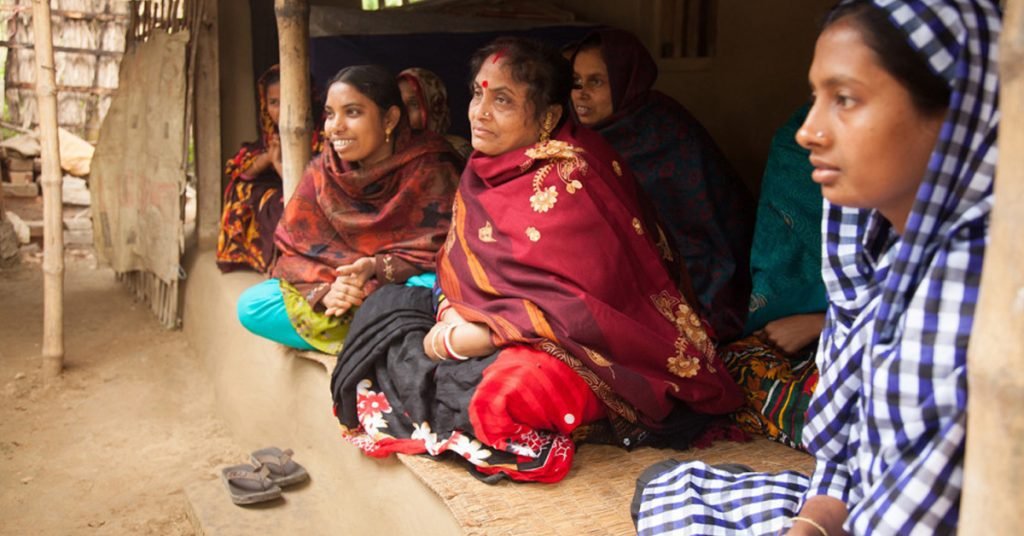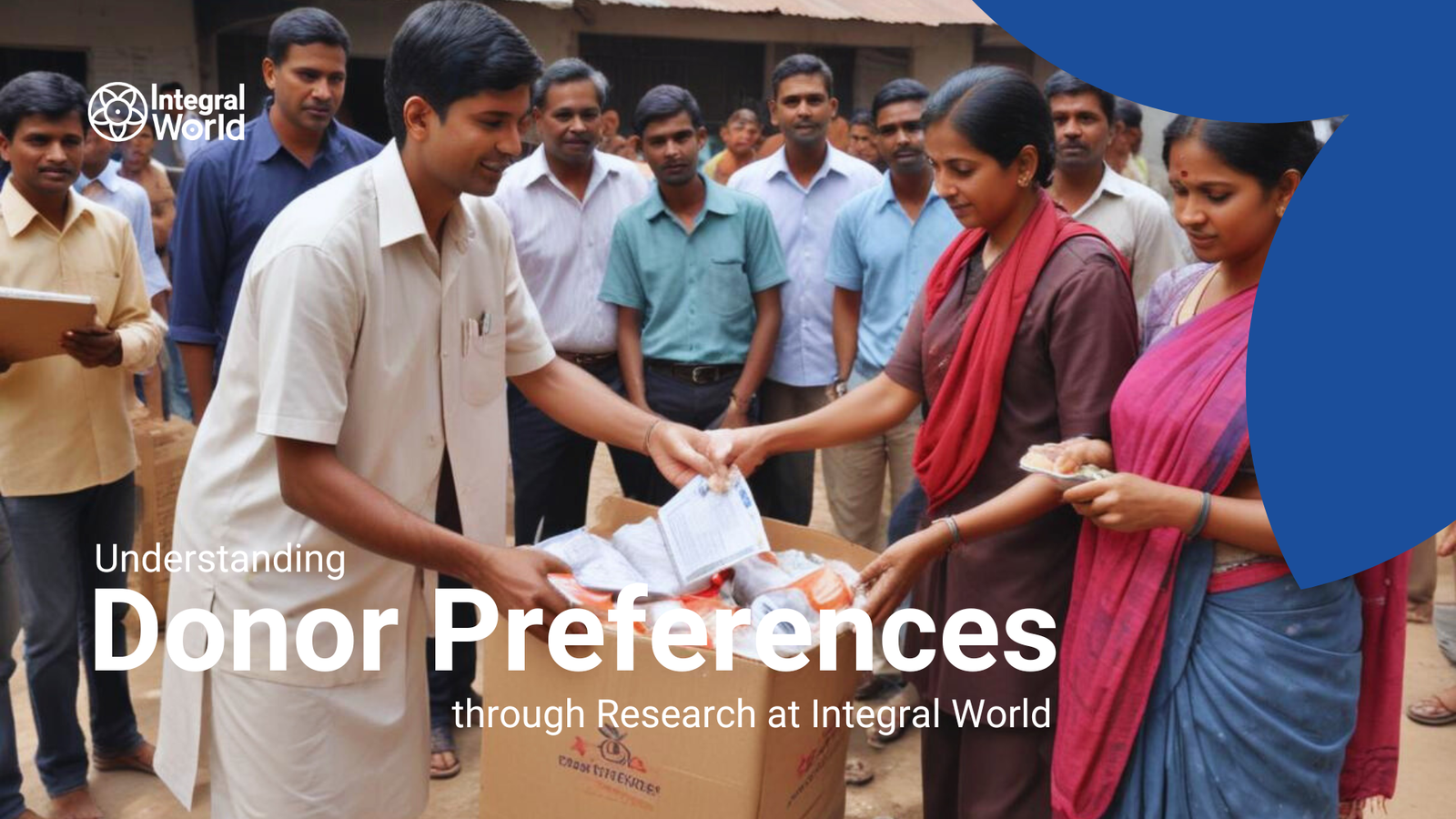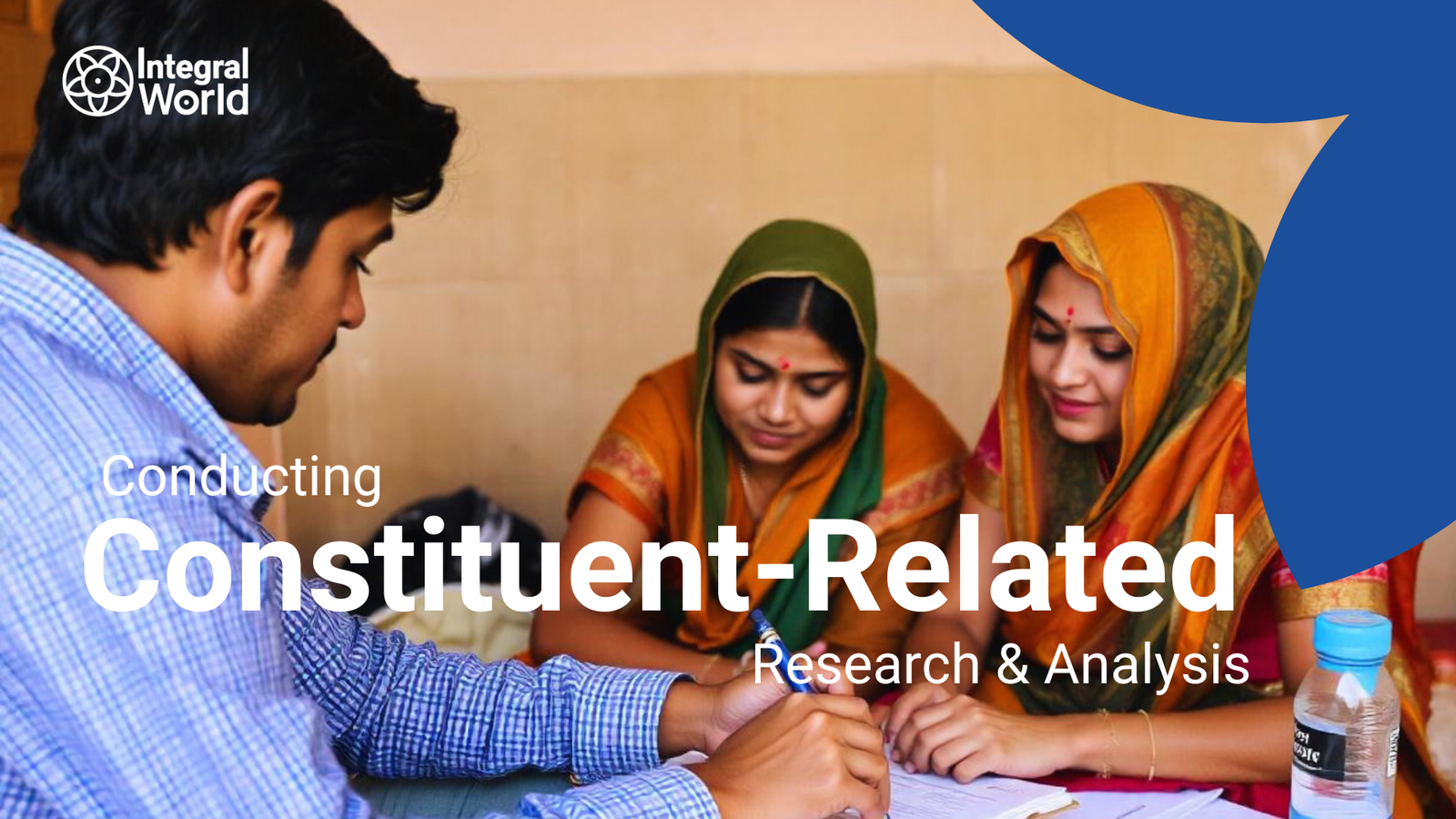Understanding donor preferences and involving communities are key to sustainable non-profit programs. Discover practical strategies and real-world examples in this guide from Integral World.
Continue readingConducting Constituent-Related Research & Analysis
For effective initiatives in sustainable and holistic development, deep understanding of the communities and constituents is necessary. Constituent-related research and analysis are important for driving positive global impact and achieving development goals at Integral World, a non-profit organisation aimed at promoting sustainable and holistic development.
This article will discuss how organisations can be steered towards these objectives through clear vision as well as strategic change supported by insights from scholars and thought-leaders, concrete examples, and actionable tips.
The Importance of Research on Constituents
Nonprofits collect data about the people and communities they serve while conducting constituent related research. Through this process, valuable knowledge regarding their needs, preferences, challenges as well as aspirations is obtained.
When done properly it informs strategic planning, program design and resource allocation ensuring that plans are relevant to the context and therefore impactful.
Key Benefits
Informed Decision-Making: Organisations should make decisions based on data including specific needs or dynamics of their target populations so that they improve program relevance as well as efficiency.
Increased Stakeholder Engagement: Engaging the community in research promotes ownership among them; it implies that even common citizens have a voice.
Enhanced Program Design: Organisations can develop programs addressing practical aspects informed by constituent inputs leading to better results with recipients’ satisfaction.
Resource Optimization: How nonprofits use resources efficiently is crucial. In order to identify areas where there is high demand for funds, research helps identify priority areas.

Concrete Examples and Case Studies
Example 1: Rural Education Programs
A non-profit organisation dedicated to improving education in rural areas that are underserved conducted thorough research to identify the specific challenges faced by local schools. They found out through extensive interviews with teachers, parents and students that there were inadequate learning materials and poor school infrastructure. Based on this information, they provided educational resources, upgraded classroom facilities and organised teacher training workshops among other things as a way of addressing these issues. Targeted research led to increased student enrollment and improved academic performance, demonstrating its effectiveness in addressing educational needs.
Example 2: Urban Environmental Projects
An environmental NGO focusing on urban areas used research methods to identify pollution sources and the main environmental concerns in a particular locality. Public surveys as well as forums helped them find out more about such things as industrial waste and vehicle emissions. Accordingly, it initiated pollution control measures such as community clean-up events and awareness campaigns. Consequently, this resulted in better air quality & more environmentally aware communities.
Steps to Conduct Effective Constituent-Related Research
Conducting thorough and effective constituent-related research involves several key steps. Here is a step-by-step guide for NGOs and other organisations:
Step 1: Define Research Objectives Clearly define what you hope will come from this study. What specific information are you seeking? How is this information useful for your programs or strategies? A clear purpose helps guide the research process, making it actionable.
Step 2: Choose Appropriate Research Methods Select research methods that match your objectives and context best. Examples include surveys, interviews, focus groups or observation studies. To have a fuller understanding of an issue, mixed methods which combine both approaches can be used.
Step 3: Engage the Community Involve local people in your research process like designing the study, collecting data, analysing finds among others. This would mean that when carried out on-the-ground its findings become more relatable thus becoming more credible therefore be acceptable.
Step 4: Collect and Analyze Data Gather data systematically following ethical considerations. Tools used should guarantee accuracy and dependability of collected data.. Thereafter, analyse data so as to identify patterns/trends/key insights thereby giving a rigorous analysis reflective of the community’s context.
Step 5: Share Findings And Take Action Let stakeholders like community members learn about the facts obtained through such a survey; donors and partners. Utilise this experience, and direct the strategic planning, program design as well as resource allocation for better results. Implement the actions recommended then have subsequent monitoring and evaluation of their impact.

Practical Strategies for NGOs
Taking into consideration the insights and practical examples given above, here are some practical strategies for NGOs that would assist them improve their constituent related research and analysis:
Build Local Partnerships Partner with other local organisations, community leaders and academic institutions. The partnerships will provide valuable skills in a wider range of fields including being able to engage communities more effectively as well as make your research more credible.
Use Technology In order to obtain data correctly, use technology effectively. Mobile surveys online platforms or data analytics tools can facilitate ease of conducting research saving on time thus giving reliable outcomes.
Ensure Cultural Sensitivity: Bear in mind cultural norms when designing or implementing research programs. This should involve using appropriate language, respecting local customs among others so that you avoid power dynamics.
Foster transparency by clearly communicating your intentions at every stage of the research process, from setting goals to sharing your methodology and findings. Make the entire process open to those affected or interested, such as the broader society.
Continuously Evaluate And Adapt Research is not a one-off activity but rather a continuous one where you keep evolving according to new learnings. Continuous evaluation leads to iterative nature leading to sustainability of such programs since they remain relevant until the end
Conclusion
For non-profit organisations to achieve sustainable and all-inclusive development, there is a need for constituency related research and analysis. It provides insight into communities, enabling informed decisions, effective program development, and resource optimization for better outcomes. Integral World is dedicated to aiding non-profits realise their objectives of development using strategic and thoughtful research.
Is your organisation prepared to extend its influence by undertaking inclusive constituent based research? To receive our assistance and have access to our expertise in this area, partner with Integral World. By coming together we can foster sustained growth that will positively impact globally. For more information about our services as well as case studies, checkout our website.
Conducting an Engagement Audit and Crafting a Call to Action
Non-profit organizations must effectively engage their stakeholders to have an impact and achieve their mission. An engagement audit and a compelling call to action are the two most important stages in this process.
The significance of these activities is examined in this article. It offers advice from industry insiders on how to improve one’s engagement strategy, as well as practical tips for those organizations looking to boost their engagement strategy.
Integral World, with its commitment towards sustainable and holistic development, stands in a good position of guiding organization through these integral processes.
Understanding Engagement Audits

What is an Engagement Audit?
An engagement audit is a thorough analysis of how well an organization engages with different parties like donors, volunteers, beneficiaries, and larger community. It looks into various touchpoints and interactions, evaluates the effectiveness of communication strategies, and finds areas for improvement.
“Engagement isn’t about a transaction; it’s about developing ongoing relationships” – Beth Kanter
The Importance of Engagement Audits
An engagement audit is significant for several reasons:
Better Relationships with Stakeholders: They help organizations understand stakeholder needs and preferences so that they can develop more impactful and lasting relationships.
Communication Improvement: It identifies gaps and opportunities in communication strategies to ensure that messages resonate with target audiences.
Impact Driven: Through aligning organizational goals with such engagements audits can drive greater impact.
Steps to Conduct an Engagement Audit
Step 1: Define Objectives and Scope
You need to clearly state objectives and scope of the audit. Consider what you want to achieve and which group of stakeholders you will concentrate on.
For example:
Objective: Examine donor involvement in order to discover ways to improve donor retention rates.
Scope: For the last five years focus on major contributors as well as regular donors.
Step 2: Collect Data
Gather both qualitative and quantitative information gathered from different sources including surveys, interviews, social media analysis among others.
For instance:
Use surveys to collect feedback from donors on their experiences and satisfaction levels. Analyze social media engagement metrics to understand how donors interact with your content.
Step 3: Analyze Findings
The data collected should be analyzed in order to discover trends, strengths, weaknesses and areas for improvement. Data visualization tools can be used to make the findings more clear.
For example: Highlight common themes in donor feedback that suggest sources of dissatisfaction or potential improvements required.
Step 4: Develop Recommendations
Have a list of implementable recommendations based on the analysis that help in enhancing stakeholder engagement. Prioritize them based on impact and feasibility.
For example: Recommendation: Implement a personalized communication strategy for major donors, including regular updates and exclusive event invitations.
Step 5: Implement and Monitor
Follow up on the recommendations given and keep monitoring progress over time. Continuously assess the effectiveness of new strategies and make adjustments as needed.
For example: Keep track of donor retention rates and engagement levels post-implementation to assess impacts brought about by the newly proposed communication strategy.
Crafting a Compelling Call to Action

The Power of a Call to Action
A call-to-action (CTA) is a statement that is meant to elicit an immediate response from listeners or readers. For instance, in non-profit organizations, an effective CTA may lead people into making donations, signing up as volunteers or engaging in advocacy activities.
“The secret ingredient for effective calls-to-action is clarity plus urgency” – Ann Handley
Elements of an Effective Call to Action
Clarity: Is your CTA clear? Is it easy for someone else to grasp its meaning? Avoid using jargon; use plain language instead.
Example: Prompt and easy to understand CTA: “Donate now in support of child education.”
Unclear CTA: Support our mission to improve educational outcomes for disadvantaged young people using several different initiatives.
Urgency: Create a sense of urgency that will prompt immediate action. Use time-bound language and highlight the importance of acting right away.
Example: Urgent CTA- Donate today towards our goal this month end.
Non-urgent CTA- We would appreciate your donation towards our cause.
Relevance: Customize your CTA based on audience interests and motivations. Showcase how their actions will make an impact.
Example: Relevant CTA- Help us protect endangered species; donate today to save their habitats.
Irrelevant CTA- Support our environmental initiatives.
Best Practices for Crafting CTAs
Use Strong Verbs: Start your call to action with a strong verb that communicates exactly what you want them to do.
Example: Sign up, Donate, Join, Support
Make it Specific: State clearly what you expect the audience to do as well as the results of their action.
Example: Donate $50 so that one needy child can have enough school supplies for one month, instead of just saying, Please donate some money for kids’ schooling stuff.
Keep it Short: Be concise with your call-to-action, avoiding extra words that could water down its intended meaning.
Example: Volunteer with us today then we are looking for volunteers who will help us during our forthcoming events and initiatives. Sign up now.
Test and Optimize: Always test different CTAs regularly and see how they perform. Employ A/B testing which compares variations then optimizes them based on results.
Example: Test out different phrasing, placement or design elements in order to find the most effective call-to-action.
Success Stories: Effective Engagement and CTAs
Case Study 1: World Wildlife Fund (WWF)
To get a better understanding of its donor base and enhance communication strategies, WWF conducted an engagement audit. Personalized email campaigns were developed using the report findings. Additionally, targeted social media ads were deployed. CTAs were also crafted to create a sense of urgency in relation to the need for protecting endangered species.
Impact:
- Increased donor retention rates by 15%
- Higher engagement rates on social media platforms
- Significant growth in online donations
Case Study 2: Charity Water
Charity Water is known for its powerful CTAs and engaging storytelling. They have clear, urgent, and relevant CTAs that drive donations and support for clean water projects. Many times, their CTA’s include specific donation amounts and emphasize how much the money will impact communities directly.
Impact:
- Raised millions of dollars through online campaigns
- Funded clean water projects in multiple countries
- Increased awareness and engagement through effective storytelling
“Storytelling is the most powerful way to put ideas into the world today.” – Robert McKee
Actionable Tips for Organizations
1. Conduct Regular Engagement Audits
Conduct regular engagement audits to evaluate how well your strategies are working as well as identify areas that need improvement. Use this data-driven approach to improve stakeholder relations.
2. Craft Clear and Compelling CTAs
Take time when writing your CTA’s such that they can be understood immediately by anyone who reads them while still being compelling enough to generate action or change behavior towards your desired goal.
3. Leverage Data and Insights
To improve relevance and the effects, divide your viewership into segments and produce personalized CTAs for each of them.
4. Integrate CTAs Across Channels
Make sure you mix up CTAs on all platforms such as: websites, social media profiles, email newsletters, and printed materials.
“Consistency is key. Consistent messaging builds trust and credibility.” – Neil Patel
Conclusion
A non-profit organization must undertake an engagement audit and craft a compelling call to action in order to increase its effectiveness and create a meaningful impact.
In understanding stakeholder needs, optimizing communication strategies as well as crafting clear and urgent CTAs, organizations can have stronger relationships and eventually fulfil their mission more effectively.
Integral World is focused on assisting firms through that process by enabling them identify their own values, improving engagement levels as well as pushing forward sustainable change.
Reach out to us today so we can tell you more about how we assist organizations to define their core values for sustainable change. Join our next initiative or become part of the global movement for holistic development and social justice.



